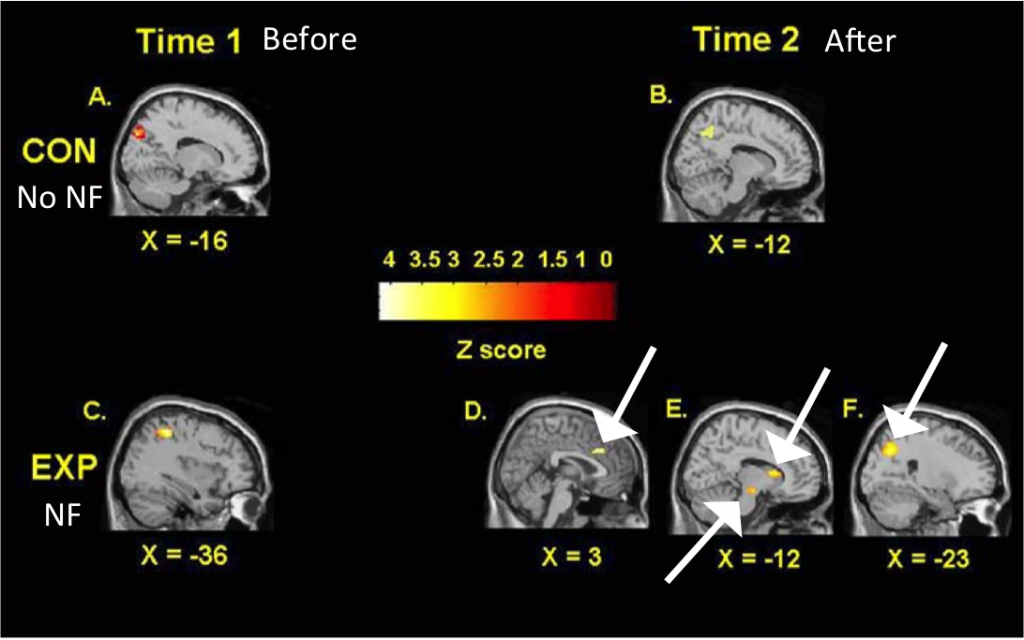ADHD 2.0 Myths Explained
ADHD 2.0 – What is it ?
There was an interesting article published recently by ADDITUDE, written by Dr Thomas Brown about the ‘new’ model of understanding ADHD as a developmental impairment of the brain’s self management system rather than just the diagnosis a collection of behaviors, helps to explain why Neurofeedback can be such an effective tool, and why ADHD medication does not address its root cause.
It also describes how the new model of ADHD recognizes the complexities of our brain, that ADHD symptoms can be caused by different brain regulation problems, and the importance of understanding the details of the client’s situation and not just assuming that ‘one size fits all’ ADHD diagnosis.
The author describes the latest research by identifying a number of myths, those that stood out for us are:
|
Myth Identified by Dr Thomas Brown’s Myth |
Our View |
|
The new model of ADHD is completely different from the old model |
We agree the new model and old models are different ways of looking at the same thing. The old model is the diagnostic model of a set of behaviors, the new model gives us an understanding of the brain’s self management system’s role in these behaviors. The new model explains why Neurofeedback focused on improving brain regulation can be a powerful intervention for ADHD. |
| People with high IQ are not likely to have executive function impairments |
We agree “Studies have shown that even extremely high-IQ children and adults can suffer impairments of ADHD. This causes them problems in deploying their strong cognitive skills consistently and effectively in many life situations.” This fact also emphasizes the importance of carefully choosing the modality of Neurofeedback you use. If you have a high IQ, the last thing you want to do is reduce it to make your brain more ‘normal’. Yet some approaches to Neurofeedback, so called ‘bulldozer’ or QEEG-guided, do exactly that, seeking to average your brain waves out so they represent a theoretical ‘average’. Ironically these approaches are also the most expensive because of the multi-channel analysis and computer databases involved. If you have talents such as a high IQ (and at BrainTrainUT we believe everyone has talents), you need a client-centric approach to Neurofeedback tuned to your needs, designed to get your brain’s management system to work as well as possible. |
|
Emotions are not involved in executive functions associated with ADHD |
Brown points out that some researchers have focused on emotional regulation (lack of inhibition) while others have shown that a deficit in emotions that drive motivation can be an impairment. We have also seen clients whose executive function is impaired not because they don’t have the functional ability but because they get frustrated, their emotional brain takes over and their logical brain is ‘locked out’. Key for these clients is improving emotional control so that the executive function can work to its fullest potential, and once they see they have the ability, self-confidence increases, frustration decreases and performance goes up. |
| ADHD impairments occur mainly in the prefrontal cortex. |
We agree ADHD symptoms are complex and involve not only the prefrontal cortex, but also many other components of the brain. Dr Brown points out differences have been seen with individuals with ADHD in the rate of maturation of specific areas of the cortex, the thickness of cortical tissue, as well as in the basal ganglia and the white matter that connects different parts of the brain. Because ADHD can present in several different ways, if you are considering Neurofeedback it is important that the assessment looks beyond the diagnosis and understands the whole picture and history. |
| ADHD symptoms are due primarily to a “chemical imbalance” in the brain |
The problem is the process by which the brain makes, releases and reuses chemicals known as ‘neurotransmitters’ within the the networks of neurons that Dr Brown describes as ‘the brain’s management system’, not a global excess or lack of these chemicals. In other words, these ‘chemical imbalances’ are symptoms of a problem of brain regulation, not the cause, which explains why ADHD medication, that can influence these chemical processes, can provide temporary relief from symptoms. Neurofeedback works with the brain’s neuro-electrical system to literally re-wire the brain’s management system. The objective isn’t to generate more of chemical X or less of chemical Y, but the ability to activate the most appropriate parts of the brain according to circumstances. If we can get the brain’s management system back on track, the chemicals will take care of themselves. |
|
Autism and ADHD are completely separate disorders that require different treatments |
Part of the reason for this is that prior to DSM-5 the system of psychiatric classification didn’t officially allow you to have both diagnoses. Dr Brown points out that research has demonstrated that many individuals with one diagnosis or the other have traits of the other diagnosis and that medications for ADHD can help those with ASD and ADHD. We agree, and you should also understand that Neurofeedback as practiced by BrainTrainUT does not depend on diagnostic criteria. We assess symptoms and develop an individualized Neurofeedback Plan for you. |
| ADHD is just one of many kinds of psychiatric disorders |
Dr Brown’s point here is that the executive function impairments of ADHD cut across other disorders too. He makes the analogy of many learning disorders being like software programs with bugs that can interfere with a few functions, and that ADHD is different, being more like a problem in the computer’s operating system that can interfere with many different programs. We quite like this analogy, but we think a software/hardware analogy is also useful. Many interventions, including Applied Behavioral Analysis (ABA) and ‘brain training’ games, help with changes to the brain’s software. In contrast Neurofeedback can change the brain’s hardware, literally re-wiring the management system that can fundamentally change the brain’s capability (see below for functional MRI scan showing parts of the brain activated after Neurofeedback). |

Parts of the brain controlling selective attention and response inhibition showed activation after NF
To find out more about Neurofeedback to help with ADHD or ASD, please call us today at (801) 686-9334. Your initial consultation gives you the chance to experience Neurofeedback and you are under no pressure or obligation to proceed.



